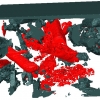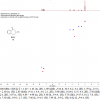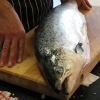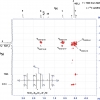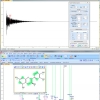FAIR, which stands for Findable, Accessible, Interoperable, Reusable, is an essential framework for the future of analytical data. Tony has taken the opportunity of a recent conference in Amsterdam to update readers on FAIR and how it affects spectroscopic data.
Tony Davies Columns
Pages
This column explores the initial results extracted from the survey in the last issue into the training the next generation of colleagues currently receives in analytical chemistry.
Do you educate students who may go on to work in industry, or are you involved in assimilating students into your team? If so, you will really want to read this issue’s Tony Davies Column. Tony and co-authors, Jennipher Dania and Joachim Zahradnik, are undertaking two surveys to explore this area: one for Academics and one for Industrialists. Please do spend the very short time needed to complete one (or both) of these surveys.
Significant research is underway globally into both improving corrosion protection as well as removing chemicals of concern from existing corrosion protection coatings. This is because the cost of corrosion in developed economies has been consistently shown to lie in the range 2–4% of Gross National Product.
Tony Davies continues his quest to find out what you all need to work more efficiently. You will remember that in the last issue, Tony introduced his survey to discover what developments were needed in spectroscopy by readers. Some of the initial responses are explored, and Tony finds that he has opened a “can of worms”.
It is your turn to contribute: to the potential development of new spectroscopic instrumentation! Tony argues that many spectroscopic fields have seen little real development: and there are many reasons for that. Now, you have your chance to let us and, more importantly, the instrument vendors know what innovations (hardware and software) you would like to see in order to help you in your work. There is a short (three-question) survey ; please use this opportunity to help influence the future of the instrumentation you will be using.
Tony Davies and a number of others consider collecting supplementary spectroscopic data. Like Eurospec, the plan is to use such supplementary data not only to enhance the published paper, but also to aid thorough peer-review by allowing reviewers access to the full data rather than, as Tony puts it, “low-resolution images of data”. I’m sure you will be interested in a look at the future through this column.
Colette Germon, Tony Davies and Paul Jones look at “Combining teaching chemometrics, with attenuated total reflection–infrared spectroscopy and food authentication”. They describe a teaching project based around the detection of food fraud. It is a good example of teaching spectroscopic data handling and advanced analysis techniques. They have investigated how adulteration and misrepresentation of meat and fish can be detected, as well as whether frozen and then thawed fish could be differentiated from chilled fish.
Developments in hardware, higher field instruments, better multinuclear probes including cryoprobe options, spectrometer control systems and also desktop NMR data processing software have all combined to make the measurement of inorganic nuclei a potentially commonplace and very helpful, often complementary, technique to other spectroscopic analytical tools.
Tony Davies and Robert Lancashire ask “How standard are your standards?”. They describe a number of the organisations working with standards that affect the spectroscopy field. It looks as if free access to these may be the only way to ensure their longevity.
Tony Davies and Steven Brown explore the solid-state nuclear magnetic resonance spectroscopy facilities at the University of Warwick, UK.
In this article, it is discussed why International standards need to keep pace with the innovation in analytical equipment and practices.
Tony Davies has interviewed Gerard (Gerry) Downey who has just retired from the Irish National Agriculture and Food Research Institute, Teagasc. Gerry will be known to many of you, particularly those who work in the fields of chemometrics, NIR spectroscopy and food & ag. I must have known Gerry for over 25 years and currently work closely with him on the publication of NIR news, so I am particularly delighted that Tony has chosen to highlight his career.
In the Tony Davies Column, Tony is getting jealous of chromatographers in “Central spectroscopic data systems: why are chromatographers so much better equipped?”. Replicating the power of chromatography data systems for spectroscopic data is not that easy.
“Spectroscopic data handling at petabyte scale” shows how one institute is dealing with truly huge amounts of data, both in its collection and in its distribution to scientists for interpretation and analysis. At the same time, the institute has been able to incorporate best practice around the FAIR Data Stewardship of scientific information.
In the Tony Davies Column, Tony looks at “Raman imaging of difficult surfaces”. He looks at a number of different approaches to dealing with uneven samples, as well as reviewing instrumental improvements that have made Raman imaging a viable analytical and diagnostic tool.
In this column, Tony describes “A new approach to identifying unknown trace level analytes by tandem mass spectrometry without reference spectroscopic database support: CSI:FingerID”. This allows for tandem mass spectrometry data to be used to identify unknown analytes from common molecular structure databases where reference spectroscopic data is unavailable.
In this Tony Davies Column, we learn about “Automated detection of counterfeit drugs using multimodal spectroscopy and advanced web-based software platforms”. The German authorities have commissioned the development of a multi-modal, transportable inspection system, including intelligent data processing and evaluation, for fast spectroscopic recognition of illicit drugs and counterfeit medicines. This is described in the column.
Tony Davies, Peter Lampen, Stephen Heller and Evan Bolton report on the future of the spectroscopic data collected as part of the EuroSpec programme. Its long-term preservation is being guaranteed through the PubChem Project of the US National Library of Medicine.
Tony Davies and Mohan Cashyap are concerned about your NMR data. When an article starts “On 10 October 2014 the impossible happened”, you will want to take note! Following the withdrawal of Agilent from the NMR business, Tony and Mohan consider three solutions to ensuring your NMR data is available now and into the future. If you have an NMR of any make, you will want to read this. Do remember that you can comment on the web version of the article.




